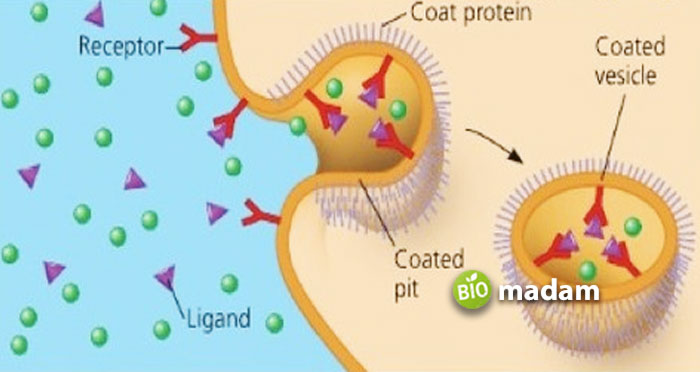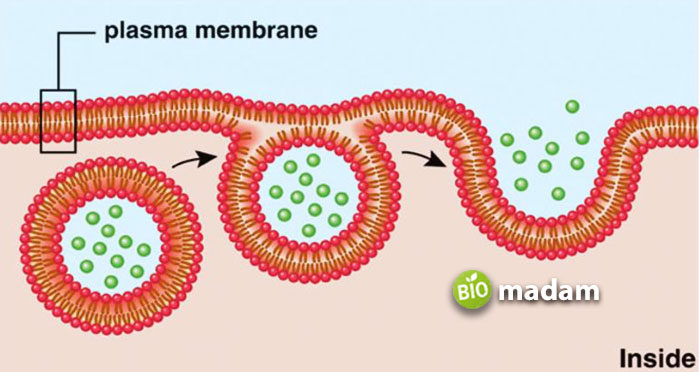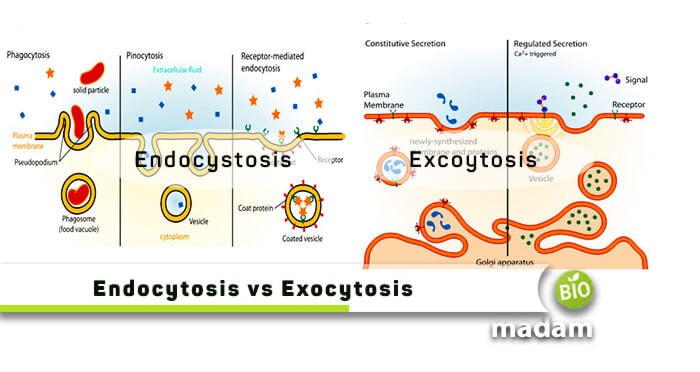Are you indulged in studying the animal cell membrane and its functioning? Baffled in knowing the difference between endocytosis and exocytosis? A cell membrane is the main hindrance for external particles to invade a cell. It only allows some substances to pass through easily and stops the rest. Some larger molecules, like proteins, polysaccharides, or nucleic acids, hold a charge so they can permeate through a cell. Any cell, taking in or throwing them out, do so with the help of endocytosis and exocytosis.
Both phenomena occur through active transport, meaning that they require energy to pump the molecules/ions in or out of the cell membrane. Endo means inside, so endocytosis refers to a process that arrests substances from outside and engulfs them to bring them in. Whereas on the contrary, exocytosis explains a procedure where a cell forms vesicles of waste material inside and releases them out of the cell membrane when necessary. Let’s look at the comparison table between the two, and then we’ll head toward the main differences.
Comparison Table
| Basis of Comparison | Endocytosis | Exocytosis |
| Brief Definition | Integration of foreign substances to a cell. | Exclusion of substances from a cell. |
| Types | Phagocytosis and pinocytosis | Regulated exocytosis and constitutive exocytosis |
| Formation of vesicles | Internal vesicles | Secretory vesicles |
| Nature of vesicles | Includes external substances to fuse to a cell membrane. | The vesicles, from inside, embeds in the cell membrane to be expelled out. |
| Energy Used | Energy is utilized for the entry of foreign particles into the cell. | Energy is utilized to expel a substance out of the cell. |
| Examples | Engulfment of nutrition by microorganisms, such as amoeba. | Transportation of macromolecules out of the cell towards specific sites. |
Explain Endocytosis
A cell membrane invaginates and engulfs the selectively permeable outer substances in the cell through a vacuole formation. This process is called endocytosis. The vacuole formed is known as an endocytic vacuole in which the particles are secured to get entry into the cell. Endocytosis can be of solid particles or liquids fluids. Thus, this phenomenon is classified into phagocytosis and pinocytosis, based on its substances. Let’s discuss the two, one by one:

Phagocytosis
One can also call phagocytosis cell-eating. It is the process where a solid particle is taken into a cell through a cell membrane. Examples include the ingestion of bacteria or viruses. When a body activates its immune system to fight harmful external microorganisms, it triggers phagocytosis. The two common types of WBCs, neutrophils, and macrophages, are the phagocytes that ingest and kill toxins or other harmful substances. Moreover, such white blood cells also vanish the damaged or aged cells.
Pinocytosis
One can also call pinocytosis as drinking of cells. This phenomenon usually takes place in animal and plant cells. In pinocytosis, a cell fetches its liquid needs from outside, so it can function accurately. Such liquids might include major nutrients and other water contents. There is a specialized form of pinocytosis, called receptor-mediated endocytosis. In this process, several essential macromolecules make a bond with specific receptors to easily attach to the cell membrane’s surface. An example includes engulfing of cholesterol.
Explain Exocytosis
Another type of active transport is exocytosis. This process initiates when the dead or unwanted substances are packed into the vesicles with the help of Golgi Bodies that is also responsible for the transportation of proteins. The vesicles formed are pushed to the outside environment through a concentration gradient.

The material to be exported is filtered through the Golgi apparatus, which forms vesicles and steps toward the plasma membrane. These packets then fuse with the membrane and are finally thrown out of the cell. Some hormones and numerous digestive enzymes follow the exocytosis process to get out of the cell. Furthermore, it also removes the waste material from the cell. We have further classified exocytosis into two primary types, regulated exocytosis, and constitutive exocytosis. These are explained below:
Regulated or Non-Constitutive Exocytosis
As the name indicates, this type of exocytosis is regulated and controlled by specific signals. When a cell receives extracellular signals, it collects the exocytosis material from the endoplasmic reticulum, for example, hormones or digestive enzymes. These substances are then packed into vesicles through the Golgi apparatus and transported toward the cell membrane. Once the cell gets the signal to expel them, it does so, and membrane depolarization occurs.
Non-Regulated or Constitutive Exocytosis
There is no involvement of external signals in constitutive exocytosis. The procedure happens following its own pathway and is non-regulated. So, whenever a few vesicles pass through the cell by exocytosis, it leaves behind a portion, either embedded in the membrane or reverted to the cell. Such a type of exocytosis occurs all the time and is beneficial in transporting large proteins out of the cell.
Differences Between Endocytosis and Exocytosis
Mechanism of Action
Endocytosis
When a foreign substance arrives near a cell, it forms invaginations and engulfs the matter in its vesicle, forcing it to move inside.
Exocytosis
Exocytosis occurs when the materials are packed in vesicles with the help of the Rough Endoplasmic Reticulum and Golgi Bodies. These vesicles then combine with the cell membrane to expel them.
Types of Vesicles Formed
Endocytosis
The process includes internal vesicles, for example, phagosomes. Special vesicles called endosomes are especially present for transportation.
Exocytosis
This process involves the formation of secretory vesicles that are to be excreted out of the cell.
Fundamental Types
Endocytosis
The two primary types of endocytosis are pinocytosis and phagocytosis.
Exocytosis
The two fundamental types of exocytosis are regulated exocytosis and constitutive exocytosis.
Route of Energy in Transportation
Both these processes are forms of active transport that utilize energy, like ATP, for their functioning. The difference lies in:
Endocytosis
Energy is acquired to transport particles into the cell.
Exocytosis
Energy is acquired to transport particles out of the cell.
Functions
Endocytosis
There are several functions of endocytosis, so let’s list a few of them below:
- It plays a part in breaking down and removing microorganisms through phagocytosis.
- The ingestion and absorption of nutrients in the small intestine are done through endocytosis.
- Amoeba, a eukaryotic protozoon, significantly utilizes endocytosis to entrap its food particles.
Exocytosis
Same as endocytosis, this phenomenon also has numerous functions, such as:
- The insulin and glucagon hormones travel from the pancreas to the liver through exocytosis.
- In the neurons, exocytosis is significantly necessary for the synaptic transmission of information.
- Exocytosis is the chief subject used by all cells to transport chemical signals from one portion to another in a body.
Examples
Endocytosis
Any microorganism (for example, amoeba) engulfs its nutrients through endocytosis.
Exocytosis
Transportation of several hormones or neurotransmitters outside the cell traveled to the required area.
Bottom Line
Have we achieved our goal of presenting you with the differences between endocytosis and exocytosis? Know that both these mechanisms hold great significance in a living body. Most of the time, a body is processing endocytosis at one place, and exocytosis transpires at the other.
Endocytosis takes place when a foreign particle is to enter a cell through the selectively permeable cell membrane. In contrast, exocytosis takes place when a vesicle formed gets out of the cell.

Hello, I would like to introduce myself to you! I am Chelsea Rogers, an experienced blog writer for science articles, holding an MPhil degree. My enthusiasm to grab the best knowledge, let it relate to botany, zoology, or any other science branch. Read my articles & let me wait for your words s in the comment section.

